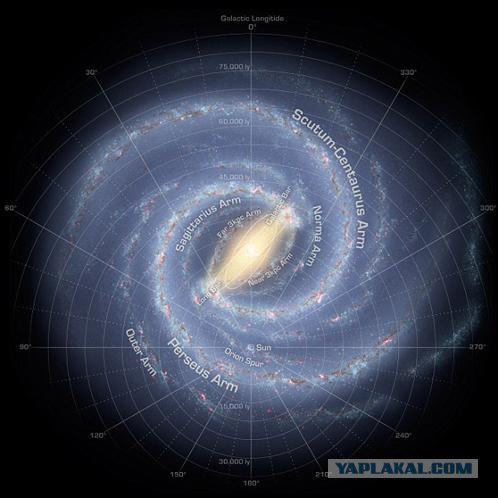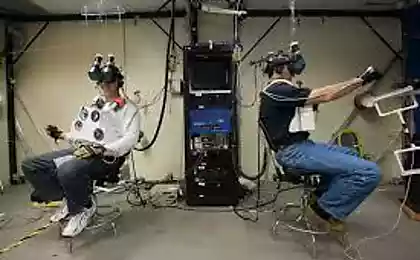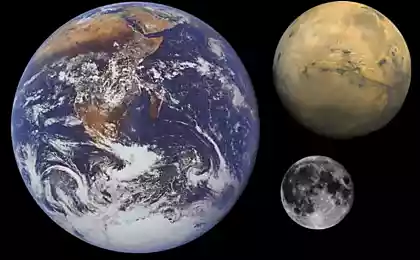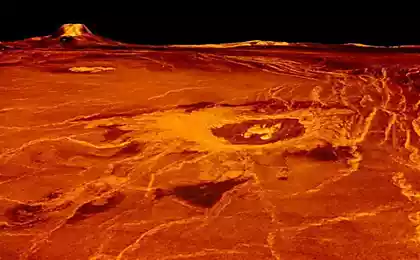669
These NASA
Sensational data obtained by the Kepler space telescope (Kepler), are encouraging hungry contact.
NASA's Kepler space telescope (Kepler) in just 136 days in 1235 discovered exoplanets. And this is after a survey of a relatively small area of our Milky Way galaxy. In the view got no more than four of the celestial sphere. Specifically, the one area where the constellation Cygnus.
From 1235 planets 54 are likely to be in the so-called "zone of life". That is comfortably located at their stars. As our Earth. In extreme cases, like Mars.
The collected data concerning not only the position of the planets, but also their size, led to statistical inference. And build on their basis of a computer model. And it can help calculate how many worlds could be inhabited.
"The model of habitability within the Milky Way» (Model of Habitability Within the Milky Way Galaxy) so named his study Govanlok Michel (Michael Gowanlock) from the University of Hawaii (University of Hawaii's). And according to the calculations in our galaxy 1, 2 per cent of the stars must have a habitable planet.
If you recall that the stars in the Milky Way about 100 billion, the planets capable of supporting life, typed more than a billion. In the constellation Cygnus, therefore, their 12-13 pieces.
Michelle took into account the fact that in some worlds could occur local "End of the World" - like a close supernova explosion that destroyed all life by radiation. But even these events that are not so rare in our galaxy, not greatly reduce the number of potentially habitable worlds.
- The Milky Way is so old - he says - that the planet lost their lives, have the time to revive it. And bring to a very high level. Until civilized.
The model shows that the closer to the center of the galaxy chances of finding habitable planets is higher than on the outskirts.
Incidentally, we are not located on the very margins of how sometimes it seems science fiction. If you submit a "vortex" of the Milky Way Moscow, our sun with the Earth will be farther Third Ring Road: somewhere in the metro area "Academic".

The planets similar to Earth, or even better, there are more than the billions of stars in our galaxy.

Milky Way: we are not on the outskirts.

Source:
NASA's Kepler space telescope (Kepler) in just 136 days in 1235 discovered exoplanets. And this is after a survey of a relatively small area of our Milky Way galaxy. In the view got no more than four of the celestial sphere. Specifically, the one area where the constellation Cygnus.
From 1235 planets 54 are likely to be in the so-called "zone of life". That is comfortably located at their stars. As our Earth. In extreme cases, like Mars.
The collected data concerning not only the position of the planets, but also their size, led to statistical inference. And build on their basis of a computer model. And it can help calculate how many worlds could be inhabited.
"The model of habitability within the Milky Way» (Model of Habitability Within the Milky Way Galaxy) so named his study Govanlok Michel (Michael Gowanlock) from the University of Hawaii (University of Hawaii's). And according to the calculations in our galaxy 1, 2 per cent of the stars must have a habitable planet.
If you recall that the stars in the Milky Way about 100 billion, the planets capable of supporting life, typed more than a billion. In the constellation Cygnus, therefore, their 12-13 pieces.
Michelle took into account the fact that in some worlds could occur local "End of the World" - like a close supernova explosion that destroyed all life by radiation. But even these events that are not so rare in our galaxy, not greatly reduce the number of potentially habitable worlds.
- The Milky Way is so old - he says - that the planet lost their lives, have the time to revive it. And bring to a very high level. Until civilized.
The model shows that the closer to the center of the galaxy chances of finding habitable planets is higher than on the outskirts.
Incidentally, we are not located on the very margins of how sometimes it seems science fiction. If you submit a "vortex" of the Milky Way Moscow, our sun with the Earth will be farther Third Ring Road: somewhere in the metro area "Academic".

The planets similar to Earth, or even better, there are more than the billions of stars in our galaxy.

Milky Way: we are not on the outskirts.

Source:
























